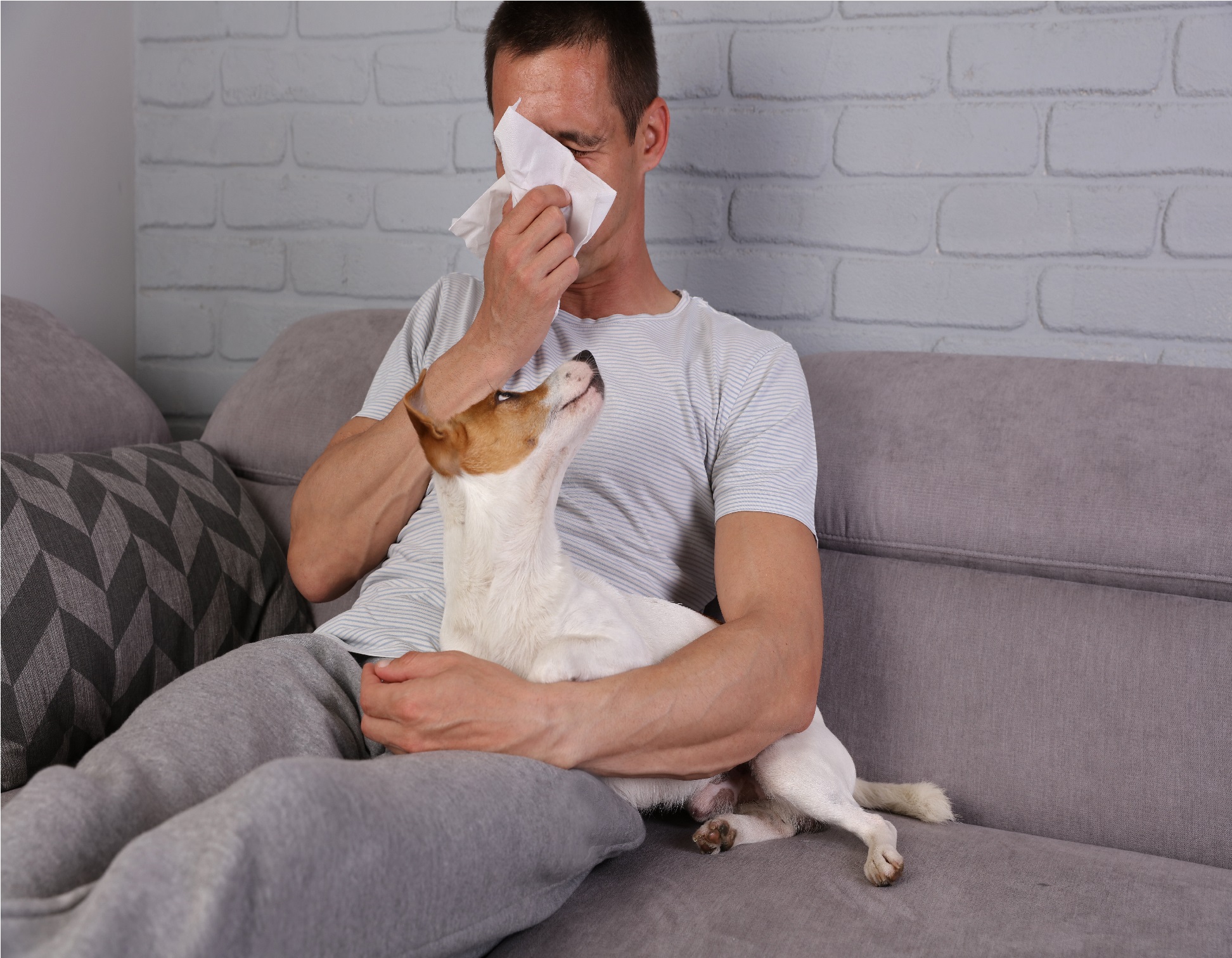Allergies to our little furry friends are common, especially for people who already suffer from allergies or asthma, and it doesn’t help that the pandemic has given those affected no choice but to spend more time stuck at home with those allergens.
But your time cooped up at home doesn’t have to be miserable when there are options for relief. After years working alongside our McAllen ENT, Dr. Frank R. Glatz, McAllen certified physician assistant Jonathan Lerma and his team of sinus relief specialists at the Glatz Group of Valley ENT have the solutions you need when it comes to dealing with pet allergies.
What Causes a Pet Allergy?
The immune system’s role is to locate foreign substances like viruses and bacteria and eliminate them. People with pet allergies, however, have over-sensitive immune systems, reacting to the pet's urine, saliva, or dander--a.k.a. dead flakes of skin.
Cat and dog allergens are all over the place, as they can gather on furniture as well as other surfaces. In fact, pet allergens can be found in places that have never housed pets because people can carry them on their clothes.
Additionally, pet allergens can get into the air whenever the animal is petted or groomed, and it can be stirred up where the allergens originally settled, either through dusting, vacuuming, or other household chores. Once airborne, the particles can stay in the air or settle on walls for long periods of time.
What Are Some Examples of Pet Allergy Symptoms?
Cat and dog allergens can land on membranes lining the eyes and nose, causing swelling and itching of the membranes, stuffy nose, and inflamed eyes. A pet scratch or lick can also irritate the skin area, and itchy eyes can occur after petting an animal and touching your eyes as well.
As a matter of fact, contact with a cat may trigger an asthma attack for at least three in ten people with asthma, and it can also result in chronic asthma.
Many airborne particles are microscopic enough to access the lungs. For some, this exposure can lead to breathing issues. Highly sensitive people can start to cough, wheeze, and experience shortness of breath within 15 to 30 minutes of inhaling allergens. Sometimes people also get a severe rash on the face, neck, and upper chest.
How is a Pet Allergy Diagnosed?
Your sinus doctor will diagnose a pet allergy based on your symptoms, your medical history, a physical examination, and/or a blood or skin test. The results of the allergy testing will display if there’s allergic sensitivity to the animal.
The doctor may tell you to stay out of the home where the pet lives to see if your symptoms stop. It doesn’t help to remove the dog or cat because the allergen will stay in your home, so much so, in fact, that pet allergens in the home can trigger symptoms months after the animal is gone.
How to Live with Your Pet Despite Allergens
Keeping your pet outside will help but won’t take out the allergens inside your home. Another alternative is to pick pets without fur or feathers like fish, snakes, or turtles.
While finding a new home for a pet and a thorough house cleaning is the best option to eliminate pet allergies, most animal lovers prefer to keep their little fur babies. Here are few things you can do to lessen exposure:
- Keep your pet away from the bedroom, and clean the area frequently. A HEPA air cleaner may also help.
- Remove your pet’s favorite furniture, remove wall-to-wall carpet, and scrub the walls and woodwork. Keep surfaces in the home clean, including bare floors and walls.
- If you have carpet, get one with a low pile and steam clean it often, or use throw rugs and wash them in hot water.
- Vacuum cleaners bring out allergens that have settled on carpet and worsen allergies. Use a vacuum with a certified asthma & allergy friendly filter if possible.
- Change your clothes following prolonged exposure with your pet.
- Forced-air heating and air-conditioning can spread allergens throughout your home. Cover bedroom vents with filtering material such as cheesecloth.
- Use an air cleaner at least four hours each day. Another kind of air cleaner with an electrostatic filter will eliminate particles the size of animal allergens from the air. Note that no air cleaner or filter will remove allergens stuck to surfaces.
- Wash your pet every week to minimize airborne allergens. However, it may not reduce your symptoms.
- Have someone without a pet allergy brush the pet outside to eliminate dander, and don’t forget to ask if they could clean the litter box or cage.
- Consult your McAllen ENT about medicine or immunotherapy options.
Discover Options for Relief When You See the Glatz Group of Valley ENT
Since COVID-19 remains a major health crisis, the safety and well-being of our staff and patients will continue to be our top priority. We can address your pet-related allergy symptoms online with our telemedicine services or through a phone call.
If you’re in need of an immediate procedure done in our office, that may also be scheduled upon request.



